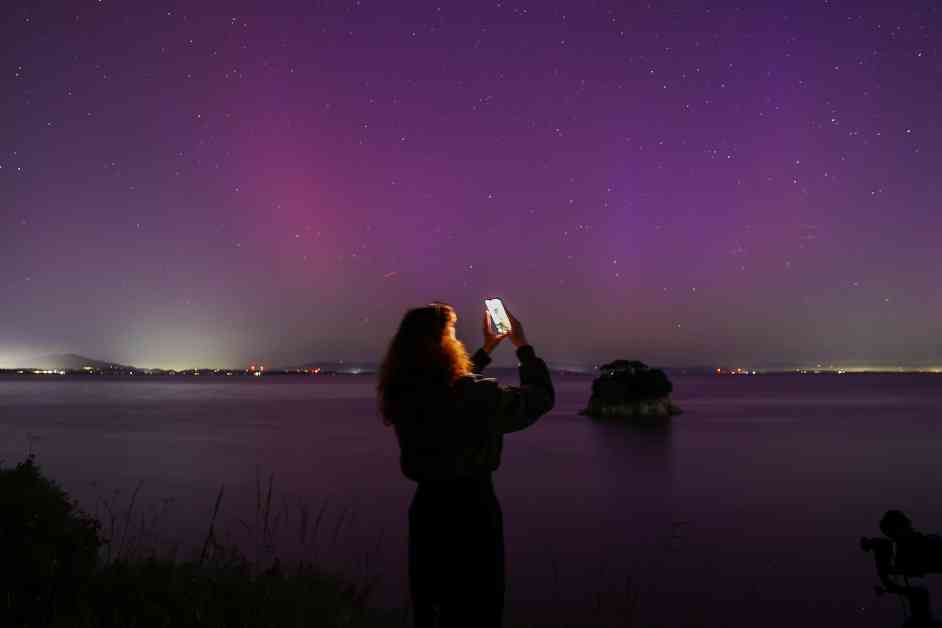The northern lights, a stunning celestial display typically only visible in remote locations like Alaska and Greenland, may be visible from the Bay Area tonight. This event follows the mesmerizing cosmic radiance that locals witnessed back in May when solar storms illuminated the sky with ribbons of purple, red, and green.
Unlike meteor showers, which have a predictable peak, the aurora borealis operates on its own schedule. According to Rob Steenburgh, a scientist at the National Oceanic and Atmospheric Administration’s Space Weather Prediction Center, the northern lights should be visible throughout the night, with periods of varying activity levels.
For those in San Francisco, the forecast for tonight calls for partly cloudy skies, with clearer conditions inland. The best viewing opportunities will be away from city lights, such as on mountaintops or other dark areas. In May, amateur astronomers successfully captured photos of the northern lights from locations like the Marin Headlands and China Camp Beach in San Rafael.
Even if the aurora is not clearly visible to the naked eye, smartphone cameras can capture the interaction of solar plasma with the Earth’s atmosphere. To photograph the shimmering lights on an iPhone, it is recommended to use night mode and increase the exposure time to 10 or 15 seconds.
For those who prefer not to venture outside, webcams atop Mount Diablo and Ballard Ridge in Modoc County offer live feeds for viewing the aurora from home. These lights are a result of the 11-year cycle of the sun’s magnetic field, specifically changes in the number of sunspots. Prior to this year, the last time NOAA issued a watch for such intense solar activity was in 2005. The coronal mass ejection that arrived this morning is expected to produce a strong G3 display tonight.
If you happen to miss tonight’s spectacle, don’t worry. According to Steenburgh, we are currently in a solar maximum, the peak of sunspot activity, which includes eruptions that generate these beautiful auroras. So, there will be more opportunities in the future to witness this natural phenomenon. Enjoy the show and keep an eye out for more chances to see the northern lights in the future!




